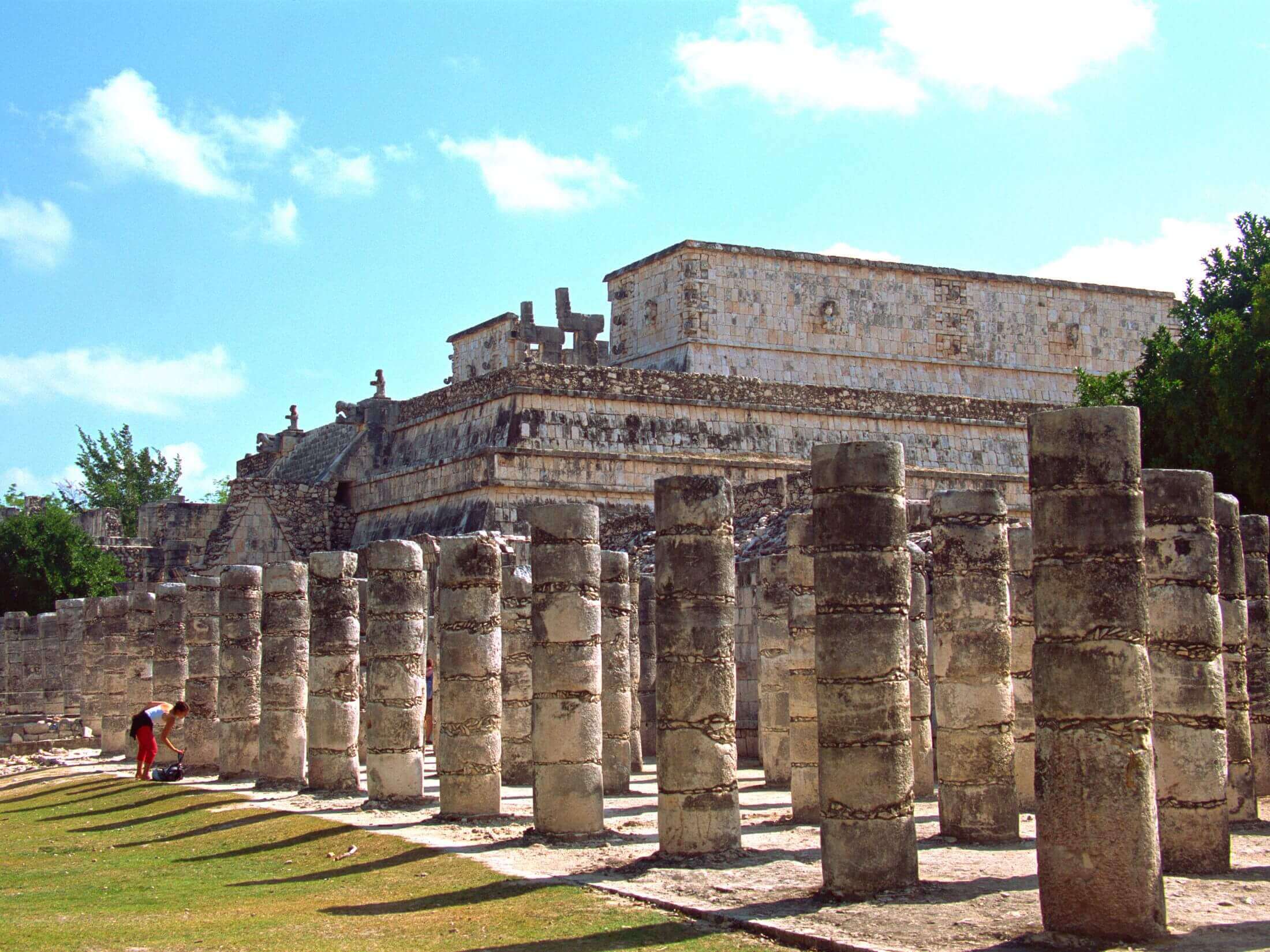Chichen Itza is beautiful and magnificent just as you must have already heard and it has plenty of Mayan Ruins to visit and get to know about its history. Chichen Itza is divided into Old Chichen and Chichen Itza where you can find 6 Mayan Ruins in the Old Chichen section and about 20 Mayan Ruins in the New Chichen or Chichen Itza, making it a total of 26 Mayan Ruins to see on the Mayan Site. The main Mayan Ruin is the Chichen Itza Pyramid or El Castillo, but there are others equally important as El Caracol or Observatory, The Temple of The Warriors, and the Mayan Ball Game.
The Temple of Kukulkan
The Kukulkan pyramid, named “El Castillo,” by locals is Chichen Itza’s main attraction. The mighty Kukulkan, the feathered serpent god, of the three primary gods who the Mayans thought created the universe was revered by ancient Mayans and the majority of Mesoamerican people at this 75-foot-tall temple, where Mayans also performed their astrological practices.
Since the classical era, the temple of Kukulkan has been the main focus of Chichen Itza, which draws a lot of historians because of its brilliant construction, which demonstrates Mayans’ vast knowledge of mathematics, astronomy, geometry, and acoustics.
Unfortunately, since 2008, the Federal Government has prohibited tourists and visitors from climbing the pyramids or any nearby monuments due to conservation concerns. However, if you’d still like to visit this historical site, we offer an incredible Chichen Itza tour that will allow you to peacefully admire the pyramids from above while learning about their legends and culture.
“Pok Ta Pok” The Mayan Ball Court
The pok-ta-pok was a Mayan ball game territory and sometimes lives were either won or lost. Since at least 1650 BC, the natives of America have participated in this ritualized sport, and it was so famous that Mesoamerican courts have been discovered as far south of Nicaragua and as far north as Arizona. Located on the west side of the great north plaza, this Chichén Itza ball court stands out due to its enormous dimensions, in fact, it is the largest Ball Court in Mesoamerica, measuring 168 m. long and 70 m.
This ritual ceremony is thought to have served as a metaphor for both the cycle of life and death as well as the ongoing conflict between the forces of good and evil. Each team consisted of one to seven players, and the ball, which was made of solid unvulcanized rubber weighed around four pounds. They had to get the ball through an elevated stone hoop and were only allowed to use their hips while playing, not their hands, feet, or heads like in traditional football.
Mostly, Pok Ta Pok’s function in Maya society was ceremonial. However, there is also thought that the ceremony occasionally acted as a front for a proxy fight between opposing nobility and prisoners of war.
Temple of the Warriors
The Temple of the Warriors is a 40 feet high and 133 feet wide structure that shows bas-reliefs of warriors, eagles, and jaguars devouring human hearts and representations of the god Tlalchitonatiuh and Chaac Mool. The Temple of the Warriors consists of four platforms, flanked on the south and west sides by 200 round and square columns called The Thousand Columns group.
In the thousand columns group, on the west side, you can see the remains of four chambers, two of which were filled in to support a second floor. The columns were built between 900 A.D. and 1200 A.D. and show the remains of stucco covering, which would have been painted in different colors.
The function of this area changed continually, it is believed that these were great meeting halls that were decorated with motifs and Chaac masks representing an earlier priestly class who governed the city.
The Sacred Cenote of Sacrifices
These sources of water were known to the Maya as “ts’onot,” which the Spaniards later changed to “cenote.” In cenotes, rituals and offerings like jade and gold were thrown to the bottom, and people were honored to offer themselves as human sacrifices to the gods. Cenotes were thought to be sacred places where people thought of being able to communicate with the water deities.
Apart from its pyramids and statues, Chichén Itzá is popular for its cenotes. The most significant one is called “The Sacred Cenote,” also known as “Chenkú” or “Cenote of the Sacrifices,” and is located right in the middle of Chichen Itza. According to legend, virgin women were thrown into the cenote and would one day return alive. Chenkú is 60 meters in diameter and 13.50 meters deep due to contamination and depth, swimming in the Sacred Cenote is not permitted, but it is fascinating to hear its legends, stories, and the view from above.
If you’d like to visit these amazing Mayan Ruins, visit our Instagram and check out all of our tours and some other Mayan culture articles.

